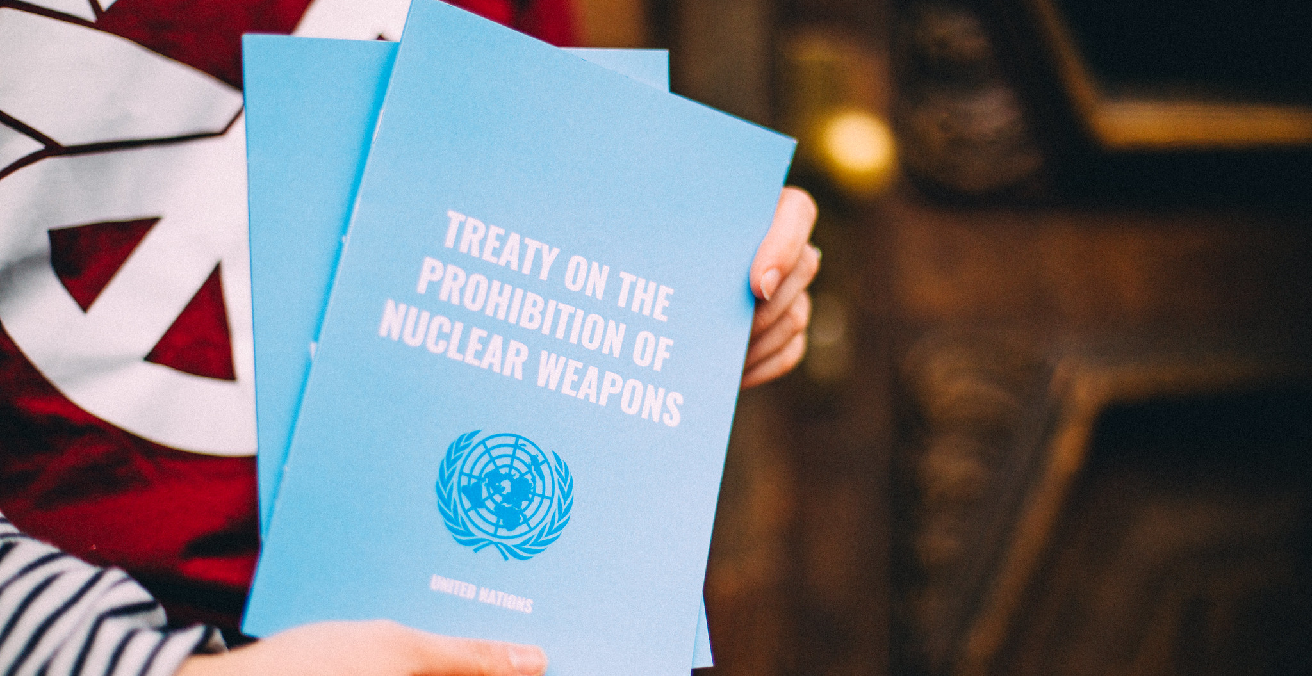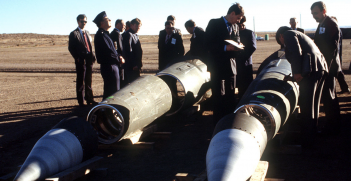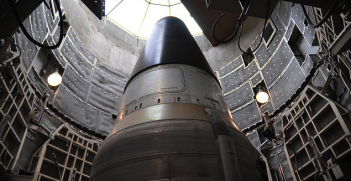Immoral, Inhumane, and Now Illegal

Today is arguably the most important date in nuclear disarmament efforts since 6 August 1945, when America dropped its bomb on Hiroshima. The UN-negotiated Treaty on the Prohibition of Nuclear Weapons (TPNW) enters into force today, establishing a clear ban on nuclear weapons under international law.
Specifically, this new treaty prohibits state parties from developing, testing, producing, acquiring, possessing, deploying, using, or threatening to use nuclear weapons. It also prohibits states from assisting or encouraging such acts. It is the first legally binding international agreement which comprehensively prohibits these weapons of mass destruction, and it was driven by the long-standing goal of eliminating all nuclear weapons.
Coincidentally, almost exactly to the day 75 years ago, the very first resolution passed by the United Nations General Assembly (UNGA Resolution 1/1) called inter alia for the elimination of national armaments of atomic weapons. Yet it has taken three-quarters of a century to achieve a formal treaty which unequivocally delegitimises nuclear weapons.
The reasons why nuclear weapons have not been categorically outlawed until now – even as the other two kinds of weapons of mass destruction (WMD), chemical and biological weapons, were – are fairly obvious: the US, soon followed by the other main nuclear weapon states (USSR, Britain, France, and China), would not allow such a thing. With nuclear weapons being the centrepiece of Cold War military calculations for these states, eliminating them was never taken seriously, even as these states, and the four subsequent nuclear states (Israel, India, Pakistan, and North Korea), all paid lip-service to the goal of disarmament, and even as the 1970 nuclear Non-Proliferation Treaty obliged them to pursue negotiations to end the nuclear arms race and to achieve nuclear disarmament.
As the Cold War was ending, a reassessment of the future roles of nuclear weapons and their associated risks seemed inevitable. Both President Ronald Reagan and President Mikhail Gorbachev called for zero nuclear weapons, and a series of studies conducted by the US Stimson Center in the mid-1990s explored these options.
Australia too, played a part in this reassessment. In 1995, Paul Keating and Gareth Evans launched the Canberra Commission on the Elimination of Nuclear Weapons, an international group of 17 former politicians, military leaders, and others, to consider whether nuclear weapons had any utility in post-Cold War politics. Their unequivocal conclusion was that they did not. Moreover, retaining nuclear weapons risked accidental (or deliberate) use, and encouraged proliferation by other states. Like the Stimson Reports, the Commission put forward a plan of action for a balanced, phased, and fully verified process of elimination encompassing all the nuclear states.
These findings were replicated many times over the next quarter century and were supported by the likes of Henry Kissinger, William Perry, Barack Obama, and other senior US officials, together with countless individuals, non-governmental organisations (NGOs), and politicians around the world. Eliminating nuclear weapons moved from being a “fringe” campaign to being embraced by many within mainstream political and security communities.
But even these reassessments of the utility of nuclear weapons and the calls from high-profile military and political individuals could not dislodge the status quo. Despite the limited utility of nuclear weapons and the risks associated with nuclear deterrence, and the fact that states could rely on conventional weaponry, hardly anything changed.
The major powers refused to move seriously towards disarmament. They reduced the numbers in their arsenals, but they still hold 13,500 nuclear weapons today. And they have been modernising and refining their nuclear capabilities, with many of these weapons vastly more destructive than the Hiroshima bomb.
Even the most basic and easily achievable of the various steps and actions to reduce nuclear dangers – such as taking their nuclear weapons off high-alert status, or reducing the saliency of nuclear weapons in their security doctrines – have not been undertaken.
Patience wears thin
By 2017, frustrated by the unfulfilled promises of nuclear weapon states to disarm, 122 non-nuclear states, supported strongly by hundreds of NGOs, voted in the UN to adopt a treaty which would formally delegitimise these weapons, the most destructive of all WMDs. The treaty was driven largely by an emphasis on the humanitarian and health implications of nuclear weapons, with new studies delivering scientific information on the impacts of even a “small” nuclear war.
As the President of the Australian Medical Association for the Prevention of War has argued, nuclear weapons
Incinerate cities, kill, main, burn and irradiate humans by the million, and destroy just about everything that health professionals need in the event of disaster. Their use could well trigger a nuclear winter that reduces food crops to starvation levels. By any measure, that’s an unconscionable affront to the healing professions.
Critics suggest the TPNW will have little practical effect, especially as the nuclear weapons states have not signed it. But the value of a prohibitionary treaty is that it makes explicit the wishes and moral priorities of those who sign it, and it signals an expectation of behaviour by others. With nuclear weapons now defined as illegal under international law, pressure will be brought to bear on all the nuclear states to implement their commitments to disarm and to move – in a phased, balanced, and verified way – to a world without nuclear weapons. Pressure will also be applied to financial institutions to divest from companies producing nuclear weapons. In the past, weapons have had to be outlawed internationally before they could be eliminated. This logic has now been applied also to nuclear weapons. The TPNW also challenges the dynamics of the existing global nuclear order. It crystallises the legal proscription of nuclear weapons for all states; no longer will “good” states like the US, Britain, or France be able to justify easily their holding of nuclear weapons. The treaty delegitimises the weapons as unacceptable under international law, regardless of who possesses them. Their existence is deemed to be an existential threat to all of humanity.
The present Australian government has so far refused to sign the TPNW, claiming alliance commitments. But the ANZUS treaty can continue, as long as Australia disavows any nuclear “protection” and rejects the nuclear activities associated with Pine Gap and other joint facilities. Some US allies have already signed, and even some NATO states are exploring options regarding how to sign the TPNW and retain NATO membership.
Australia has always engaged with global efforts to ban weapons deemed to be inhumane. It has taken a clear stand on abolishing chemical weapons, biological weapons, and landmines, and has championed the Arms Trade Treaty which proscribes transfers of conventional weapons which might be used to violate human rights. As a state committed to a rules-based order, to multilateralism, to the UN, and to human rights, refusing to sign the TPNW will be at odds with Australia’s professed values.
Supporters of the treaty do not see it as an easy road to disarmament. In many ways, it is what comes after the treaty enters into force which will be important.
Eighty-one countries have already signed. It is hoped that an evolving culture of compliance will lead more states to join, and make states that remain outside the treaty and that retain nuclear weapons increasingly isolated.
Dr Marianne Hanson is associate professor of International Relations from the University of Queensland.
This article is published under a Creative Commons Licence and may be republished with attribution.





